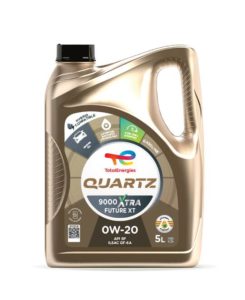Choosing the Right Engine Oil
Understanding engine oil can be complicated and making the right choice for your vehicle can be time-consuming. In fact, many of us will pick up the first bottle we see without understanding what we are putting into our vehicles. As difficult as it may be, it is incredibly important to choose the right oil as it can have various effects on the running ability and longevity of your engine.
Choosing the right type of engine oil not only increases the life of your engine, but it can also allow your engine to run much more efficiently. This can increase your fuel efficiency lowering your average fuel spend. But before looking at the economics, it’s always important to get the technical side right. Below we will detail the key ACEA specifications to help make that choice a little easier.
The European Automobile Manufacturers’ Association or ACEA define oil specifications that are known as ACEA Oil Sequences. Updated every 4 years (the most recent being 2016) these specs are made up of a letter(s) that highlight the class and a number that defines the categories, with A/B & C representing passenger cars and light commercial vehicles.
A/B: GASOLINE AND DIESEL ENGINE OILS
A1/B1: This category was removed during the introduction of the 2016 ACEA Sequences.
A3/B3: Engine oils designed for extended drain intervals where specified by the engine manufacturer, and/or for year-round use of low viscosity Oils, or for severe operating conditions as defined by the engine manufacturer.
A3/B4: Again, these are designed for use in passenger car & light commercial gasoline & DI diesel engines. Importantly, these oils are also suitable for use where an A3/B3 is required.
A5/B5: These engine oils are intended for use at extended drain intervals in gasoline & diesel engines designed to use low viscosity oils with HTHS (high-temperature high shear) viscosity of 2.9 to 3.5 mPa*s. These Oils are unsuitable for use in certain engines so remember to always consult the OEM’s owner’s manual.
C: CATALYST COMPATIBILITY OILS
If you have a modern turbodiesel car with a DPF, you must use a low saps engine oil classified by ACEA as C Class.
C1 Engine Oils with the lowest SAPS-Level, C1 oils are intended for use as catalyst compatible Oil at extended Drain Intervals in vehicles with all types of modern after-treatment systems. These are specifically suited to high-performance passenger car & light commercial gasoline & DI Diesel Engines that are capable of using low viscosity oils with a minimum HTHS Viscosity of 2.9 mPa*s.
C2: Mid SAPS-Level engine oils, C2 oils are intended for use as catalyst compatible Oil at extended Drain Intervals that are designed to be capable of using low viscosity Oils with a minimum HTHS Viscosity of 2.9 mPa*s.
C3: Again, Mid SAPS-Level, the main difference between C2 & C3 engine oils are C3’s are designed to be capable of using oils with a minimum HTHS Viscosity of 3.5 mPa*s.
C4: An engine Oil with low SAPS-Level, intended for use as catalyst-compatible Oil at extended drain intervals that are designed to be capable of using oils with a minimum HTHS Viscosity of 3.5 mPa*s.
C5: Mid SAPS-Level used for further improved fuel economy, intended for use as catalyst compatible oil at extended Drain that is designed to be capable and OEM-approved for use of low viscosity oils with a minimum HTHS Viscosity of 2.6 mPa*s.
Similar articles you may find interesting
Products that may interest you
Finol Oils: Which oil
Unsure of the lubricant needed for your car? No problem, try Finol’s WhichOil Lubricant Advisor today. With a number of new innovative features WhichOil will not only provides you with fast and accurate information but also capacity, change intervals and technical data sheets to ensure you always use the correct lubricant in your vehicle. Simply go to www.whichoil.ie and get expert recommendations for your vehicle(s). You can also consult our technical team at +353(0)1 5827112 to learn more.

